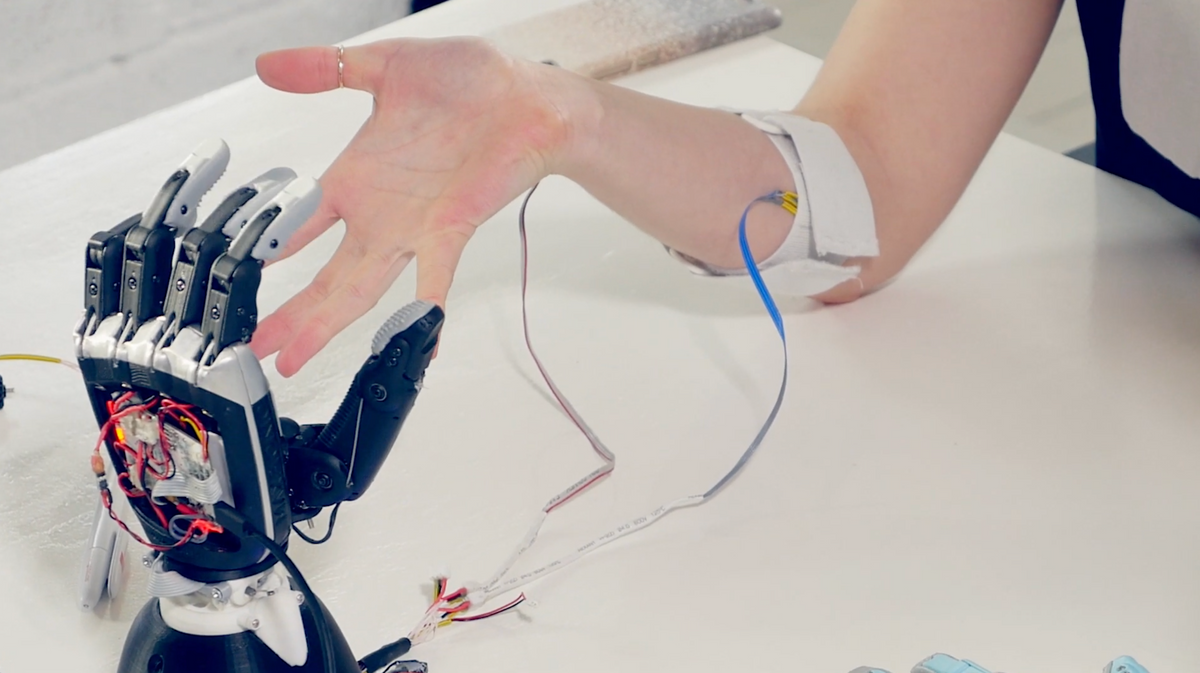This is a sponsored article brought to you by California State University, Northridge (CSUN).
Your smartphone is getting smarter. Your car is driving itself. And your watch tells you when to breathe. That, as strange as it might sound, is the world we live in. Just look around you. Almost every day, there’s a better or more convenient version of the latest gadget, device, or software. And that’s only on the commercial end. The medical and rehabilitative tech is equally impressive — and arguably far more important. Because for those with disabilities, assistive technologies mean more than convenience. They mean freedom.
So, what is an assistive technology (AT), and who designs it? The term might be new to you, but you’re undoubtedly aware of many: hearing aids, prosthetics, speech-recognition software (Hey, Siri), even the touch screen you use each day on your cell phone. They’re all assistive technologies. AT, in its most basic form, is anything that helps a person achieve enhanced performance, improved function, or accelerated access to information. A car lets you travel faster than walking; a computer lets you process data at an inhuman speed; and a search engine lets you easily find information.
CSUN Master of Science in Assistive Technology Engineering
The fully online M.S. in Assistive Technology Engineering program can be completed in less than two years and allows you to collaborate with other engineers and AT professionals. GRE is not required and financial aid is available. Request more information about the program here.
That’s the concept – in a simplified form, of course. The applications, however, are vast and still expanding. In addition to mechanical products and devices, the field is deeply involved in artificial intelligence, machine learning, and neuroscience. Brain machine interfaces, for instance, allow users to control prosthetics with thought alone; and in some emergency rooms, self-service kiosks can take your blood pressure, pulse and weight, all without any human intervention.
These technologies, and others like them, will only grow more prevalent with time – as will the need for engineers to design them. Those interested in the field typically enter biomedical engineering programs. These programs, although robust in design, focus often on hardware, teaching students how to apply engineering principles to medicine and health care. What many lack, however, is a focus on the user. But that’s changing. Some newer programs, many of them certificates, employ a more user-centric model.
One recent example is the Master of Science in Assistive Technology Engineering at California State University, Northridge (CSUN). The degree, designed in collaboration with industry professionals, is a hybrid of sorts, focusing as much on user needs as on the development of new technologies.
CSUN, it should be noted, is no newcomer to the field. For more than three decades, the university has hosted the world’s largest assistive technology conference. To give you an idea, this year’s attendees included Google, Microsoft, Hulu, Amazon, and the Central Intelligence Agency.
The university is also home to a sister degree, the Master of Science in Assistive Technology and Human Services, which prepares graduates to assist and train AT users. As you can imagine, companies are aggressively recruiting engineers with this cross-functional knowledge. Good UX design is universally desired, as it’s needed for both optimal function and, often, ADA compliance.
In addition to mechanical devices, the field of Assistive Technology is deeply involved in artificial intelligence, machine learning, and neuroscience
The field has implications in war as well – both during and after. Coming as no surprise, the military is investing heavily in AT hardware and research. Why? On the most basic level, the military is interested in rehabilitating combat veterans. Assistive technologies, such as prosthetic limbs, enable those wounded in combat to pursue satisfying lives in the civilian world.
Beyond that, assistive technology is a core part of the military’s long-term strategic plan. Wearable electronics, such as VR headsets and night vision goggles, both fit within the military’s expanding technological horizon, as do heads-up displays, exoskeletons and drone technologies.
The Future of Assistive Technology
So, what does the future have in store for AT? We’ll likely see more and better commercial technologies designed for entertainment. Think artificial realities with interactive elements in the real world (a whale floating by your actual window, not a simulated one). Kevin Kelly of Wired Magazine refers to this layered reality as the “Mirrorworld.” And according to him, it’s going to spark the next tech platform. Imagine Facebook in the Matrix... Or, come to think of it, don’t.
An increasing number of mobile apps, such as those able to detect Parkinson’s disease, will also hit the market. As will new biomedical hardware, like brain and visual implants. Fortunately, commercial innovations often drive medical ones as well. And as we see an uptick in entertainment, we’ll see an equal surge in medicine, with new technologies – things we haven’t even considered yet – empowering those in need.
Help build the future of assistive technology! Visit CSUN’s Master of Science in Assistive Technology Engineering site to learn more about the program or request more information here.
CSUN Master of Science in Assistive Technology Engineering Program
Students in the CSUN Assistive Technology Engineering program work on projects that involve robotics, artificial intelligence, and neuroscience.





- An Engineer, His Segway, and the ADA: A Tale of the Open Road ... ›
- Cameras Instead of Mirrors? Not So Fast, Experts Say - IEEE Spectrum ›
- Hoaloha Robotics Developing Socially Assistive Hardware Platform ... ›
- Elastic Patch Tech Helps Vocally Impaired Speak - IEEE Spectrum ›



